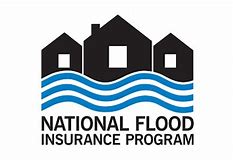 This past week I attended the Windstorm Insurance Conference put on by WIND (the Windstorm Insurance Network), which is an association that was formed to bring together defense and insurance company lawyers and other professionals on a variety of topics. Nearly 800 attendees from all insurance disciplines attended this mid-winter conference in Orlando.
This past week I attended the Windstorm Insurance Conference put on by WIND (the Windstorm Insurance Network), which is an association that was formed to bring together defense and insurance company lawyers and other professionals on a variety of topics. Nearly 800 attendees from all insurance disciplines attended this mid-winter conference in Orlando.
![]() There were a litany of insurance breakout sessions but I attended with one specific purpose and that was to listen to the lecture on how to manage disputed flood claims in the National Flood Insurance Program (NFIP). Kevin Miller, who is a brilliant independent claims professional, was the panel moderator. Miller (no relation to yours truly) was completely transparent and discussed for over an hour a step-by-step on how to file a claim, the federal government’s refusal to accept an assignment of benefits, and how a public adjuster fits into a claim (or not).
There were a litany of insurance breakout sessions but I attended with one specific purpose and that was to listen to the lecture on how to manage disputed flood claims in the National Flood Insurance Program (NFIP). Kevin Miller, who is a brilliant independent claims professional, was the panel moderator. Miller (no relation to yours truly) was completely transparent and discussed for over an hour a step-by-step on how to file a claim, the federal government’s refusal to accept an assignment of benefits, and how a public adjuster fits into a claim (or not).
The NFIP has a myriad of publications on their website describing their processes, policy forms, and outreach programs. For example, this NFIP guideline for policyholders could serve as a model for property insurance companies to use to educate their own policyholders on what to expect at claim time. Florida’s CFO Jimmy Patronis often says that filing a claim is a “process” and as such, spelling out the process may prove helpful.
In addition, instructor Miller advised that he “has a conversation” with claimants by saying to them “you will not be getting all your ‘stuff’ back (after the disaster).” We learned at this session all about the NFIP policy exclusions and just how limited the NFIP form is. All participants agreed that there needs to be a continued effort in pushing for private flood insurance.
Last week, federal financial regulators came to agreement and issued a rule mandating banks and other lenders accept private flood insurance to satisfy coverage requirements. The rule, which becomes effective July 1, should make private flood insurance more available in flood zones, but it doesn’t tackle all the important issues for homeowners and buyers.
“It appears that regulators are attempting to adopt, by rule, a portion of what was contained in an earlier bill (Ross-Murphy),” says Trey Goldman, Florida Realtors® legislative counsel in the Office of Public Policy. “Under this rule, banks must recognize and accept private flood coverage. But the ‘continuous coverage’ language is just as important to homeowners, and the regulations really don’t address that. Without continuous coverage, policyholders who leave the NFIP and later come back could be subject to a full risk rate instead of their previous subsidized rate.”
Under the rule, lenders will have to accept private flood insurance policies if they offer coverage at least as comprehensive as NFIP. Lenders will also have an option to accept private flood insurance policies that don’t offer as much coverage as NFIP, which the insurance industry and others want.
So for now, all eyes are on Congress for the May 31 NFIP deadline. Next up is a wonderful assortment of newsy tidbits for you!

